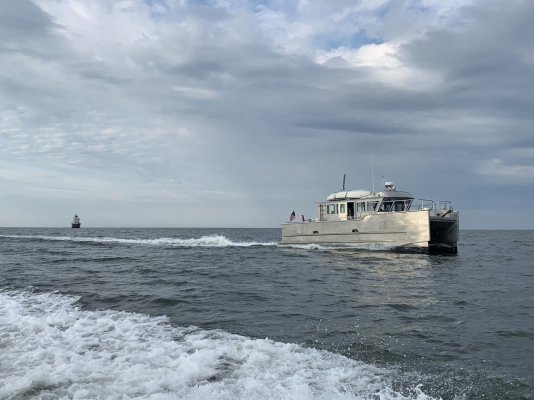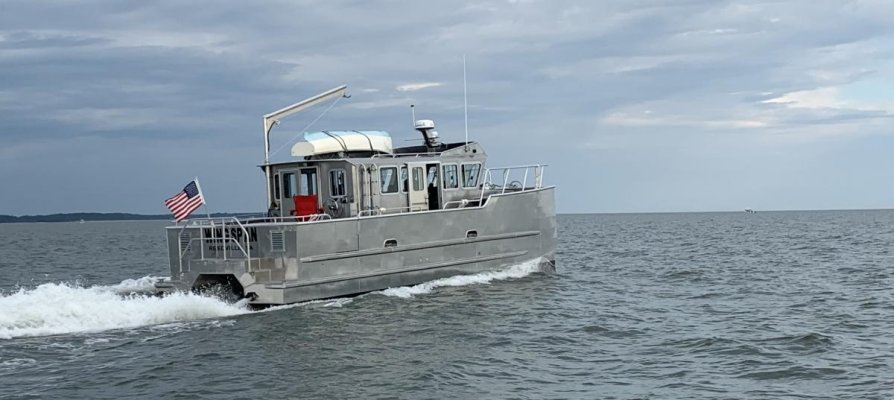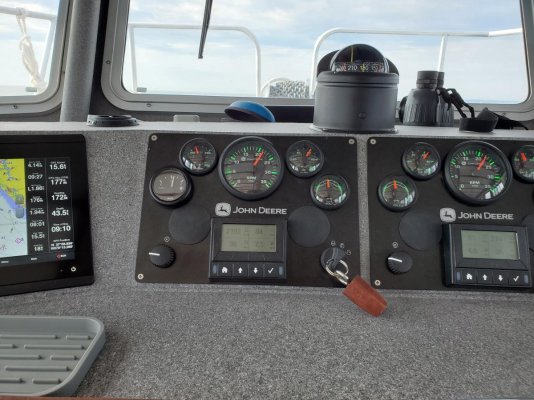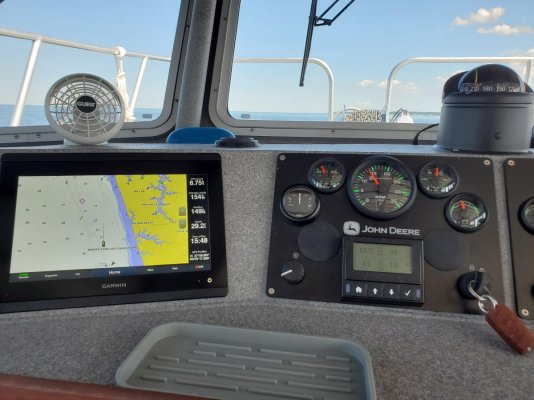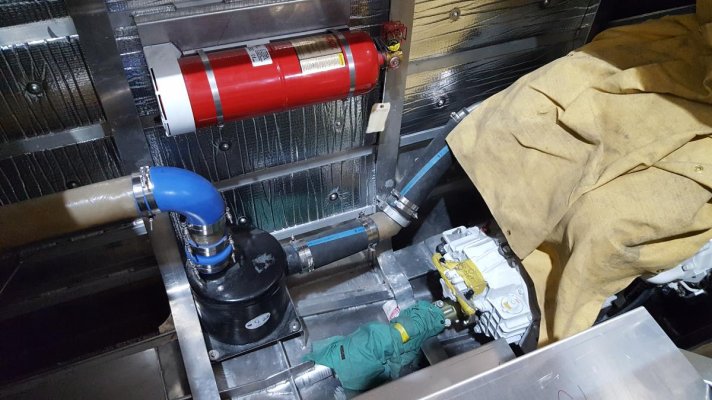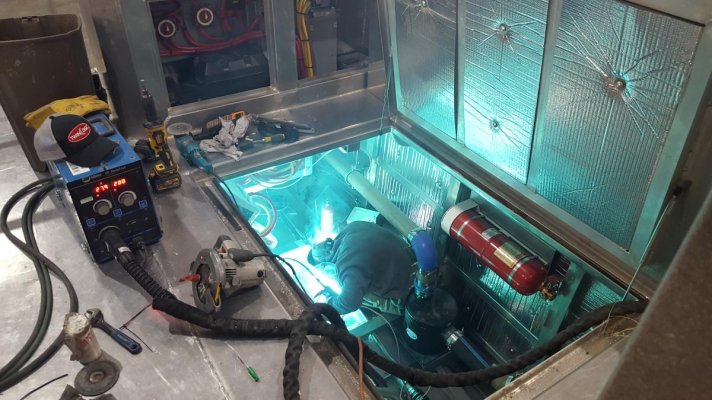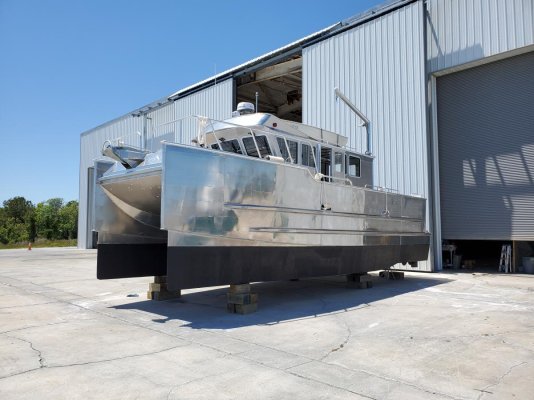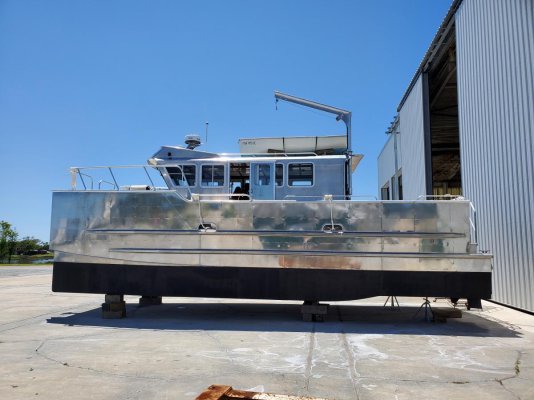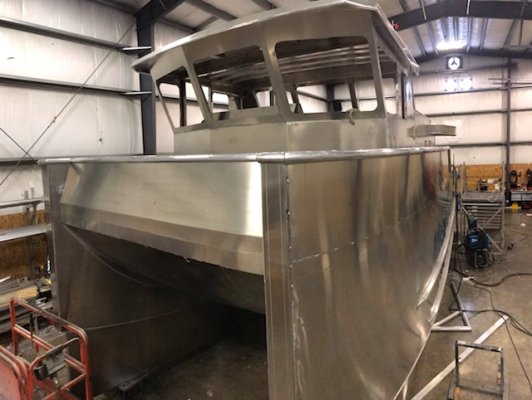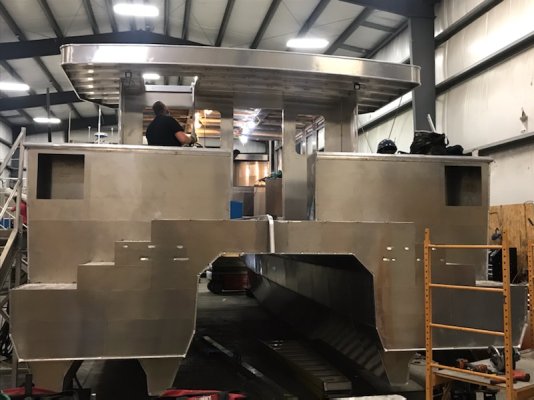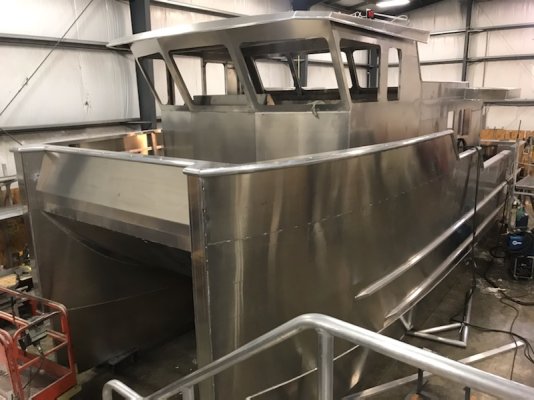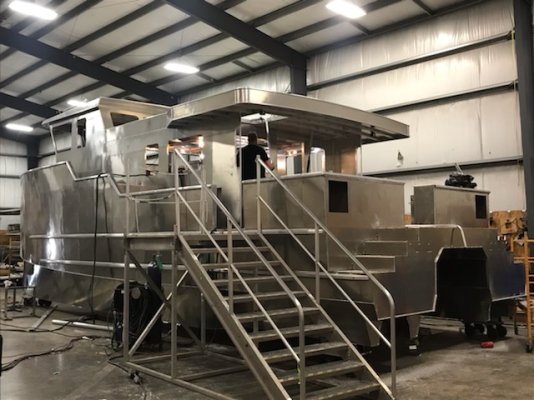Well done.
We're going to add soundown - can I asked how you affixed it?
Someone added sound insulation on ours years ago with glue and a previous owner pulled it off, leaving horrible glue crud everywhere. It's one of my post-covid exercises to cleanup and put in new. I see some of the more modern have adhesive backing rather than dobs of glue - do you know if that works on alu?
Also, are you getting any vibration-induced noise through the structure? I can't recall whether you used vibration mounts...
Soundown seems like one of the most effective solutions in my limited experience. The only thing I don't like about it is that it doesn't always seem to age well. I've had problems in other boats with it coming loose on overhead structures because of it's weight and how it was attached.
This picture shows an areas where they did an acceptable job attaching the insulation. In these areas they glued metal fasteners to the aluminum, then used roves and caps to hold the Soundown in place. I think 2 fasteners per panel are probably not sufficient, but in most places it is also wedged in behind the flange, so that helps give it a true mechanical attachment. I believe they used 5200 to adhere the fastener to the aluminum. But I've had success using epoxy to hold the fasteners in other boats. Once mechanically attached with fasteners, things tend to stay in place because the load is being spread out over the lead sheeting in the Soundown.
The areas where I consider substandard installation all they did was cut the Soundown to fit inside framing and just used mylar seam tape to attach it to the flanges. With weight, vibration, and heat all working to weaken the tape, I don't think that will last long. Fortunately, they only used that method in some small, hard to get to areas so the major spans are done properly.
I'm not a fan of gluing Soundown, but I've actually never tried it. I may experiment with spray on adhesive to see if that works once the tape fails. If your boat has patches of glue, it makes me wonder if they just dabbed on a thick glue in certain spots? That's not one of the recommended methods - it seems like the load is all being borne by the foam, which is the weakest part of the Soundown sheet. When you re-do yours, I think if you were to use the metal fasteners you'd be much more satisfied.
Do you have any experience or thoughts on spray on adhesive for small pieces? The ones I'll have to reattach are around 4" x 6" - so they don't have much weight and using mechanical fasteners will be hard to do because of the location.
Regarding vibration noise - I don't feel that there's much of that. Certainly not at RPM's above, say 900. At idle I can see the vibration ripples on the water, but it just doesn't seem to have a lot of vibration. Of course, at slower speeds there is always something vibrating at any given RPM (like stovetop, cups, etc) until I start to get above around 1,000 rpm and then it all smooths out. Maybe there are still some vibrations but they are drowned out by engines and water sounds.
They used hard mounts on my engines - large aluminum pads welded to the engine beds and the steel feet of the engine mounts are bolted directly to the pads. I was a little nervous about the lack of soft mounts but that seems to have worked by transferring all vibration directly to the structure. I've seen problems with soft mounts adding to vibration at certain speeds by setting up a harmonic (or sympathetic, I don't remember the right term) vibration that shakes your teeth until you change RPMs.

